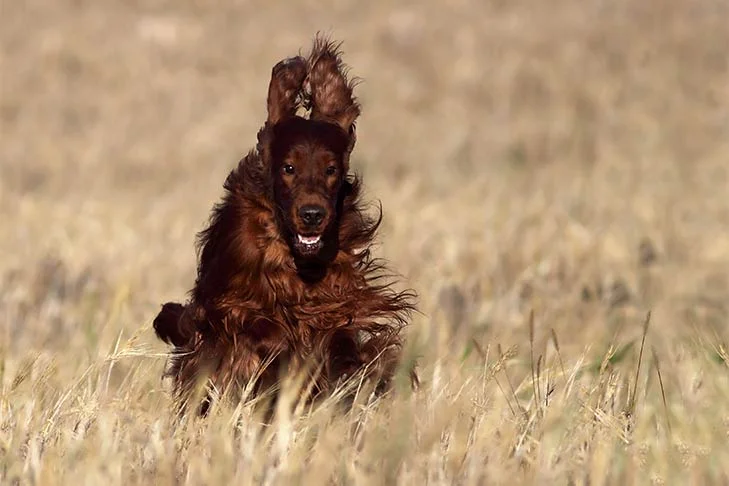The Irish Setter is a passionate gundog with a striking red coat and a reputation for elegance and speed. They are renowned for being excellent family pets, making gentle companions for the elderly, and boisterous playmates and tennis ball retrievers for young children. According to supporters, the Irish Setter is the most attractive dog breed. The Irish are renowned for their magnificent coat of mahogany or chestnut, standing more than two feet at the shoulder and having a strong yet graceful build. The Irish are among the fastest sporting dogs thanks to their long, sinewy legs and strong rear drive. For more than 200 years, pet owners and sportsmen have cherished the Irish Setter breed because of its endearing disposition. Irish are gregarious dogs who love to socialize. These boisterous redheads are really just big kids at heart, but they have a strong desire to please and will learn well from gentle, encouraging instruction. They are reputed to be fearless, tough hunting partners who approach their profession with a devil-may-care mentality.





 Health
Health Grooming
Grooming Exercise
Exercise Training
Training Nutrition
Nutrition